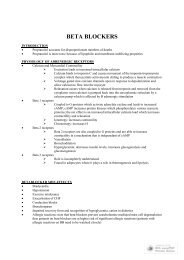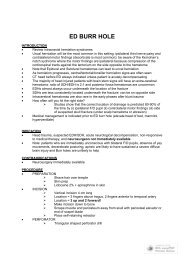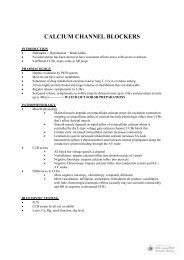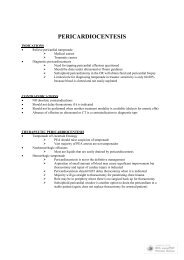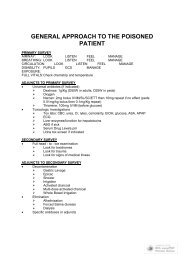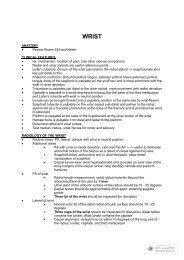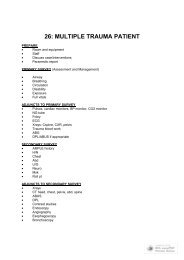ESOPHAGEAL OBSTRUCTION - rEMERGs
ESOPHAGEAL OBSTRUCTION - rEMERGs
ESOPHAGEAL OBSTRUCTION - rEMERGs
You also want an ePaper? Increase the reach of your titles
YUMPU automatically turns print PDFs into web optimized ePapers that Google loves.
GASTRITIS<br />
ACUTE<br />
‣ Alcohol<br />
‣ NSAIDs<br />
‣ Bacteria<br />
‣ Food poisoning<br />
‣ Stress<br />
CHRONIC<br />
‣ Autoimmune - congenital pernicious anemia<br />
‣ Bacteria - HP<br />
‣ Chemical - bile relux (following Sx,EtOH)<br />
‣ Drugs - NSAIDs<br />
‣ Eosinophillic - eosinophillic gastroenterities<br />
‣ Follicular - HP<br />
‣ Granulomatous - TB, Chron’s<br />
‣ Hypertrophic - menetrier’s dz<br />
*Chronic gastritis 10Xs more likely to get gastric Ca*<br />
MANAGEMENT<br />
‣ Endoscopic diagnosis<br />
‣ Management depending on condition present<br />
SUPERIOR MESENTERIC ARTERY SYNDROME<br />
‣<br />
‣<br />
SMA crosses the duodenal segment of small intestine and leads to obstruction<br />
Pain precipitated by eating<br />
HELICOBACTER PYLORI (HP)<br />
MICROBIOLOGY<br />
‣ Gram -ve rod, spiral, flagellated, giesma +ve, urease producing<br />
‣ Source unknown but person-person spread most likely<br />
‣ most acquired in childhood<br />
‣ family spread<br />
‣ fecal-oral spread most likely<br />
‣ Risk factors for infection are mainly low SES and age<br />
‣ Prevalence increase w/ age (1% per year of life when >30yo); plateaus at approximately<br />
40 -50% at > 50yo<br />
‣ Multiple genotypes w/ virulent strains causing ulcer disease. This explains why not all<br />
individuals w/ the HP infection get ulcer disease<br />
‣ Only 15% of infected b/c symptomatic (all have gastritis, 15% develop PUD)<br />
‣ Lives in mucus layer<br />
‣ a few adhere to mucosa but DO NOT penetrate mucosa



